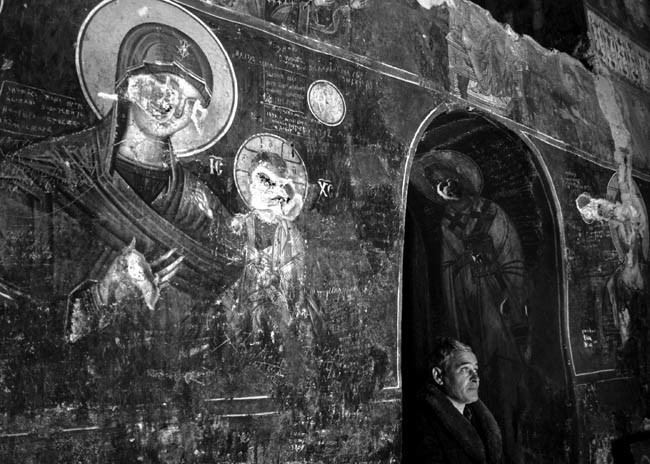 | ||
In total, 155 Serbian Orthodox churches and monasteries were destroyed between 11 June 1999 and 19 March 2004, after the end of the Kosovo War and including the 2004 unrest in Kosovo. Many of the churches and monasteries dated back to the 12th, 13th and 14th centuries.
Contents
Aftermath of Kosovo War
Between the arrival of KFOR in June 1999 and after the 2004 unrest, more than 140 holy sites were destroyed.
2004 unrest
In a statement on 18 March, the Serbian Orthodox Church (SPC) reported that a number of its churches and monasteries in Kosovo had been damaged or destroyed by rioters. At least 30 sites were completely destroyed, more or less destroyed, or further destroyed (sites that had been previously destroyed). Apart from the churches and monasteries, tens of support buildings (such as parish buildings, economical buildings and residences), bringing the number close to 100 buildings of the SPC destroyed. All churches and objects of the SPC in Prizren were destroyed. The list includes several UNESCO World Heritage Sites.
The violence quickly spread to other parts of Kosovo, with Kosovo Serb communities and religious and cultural symbols attacked by crowds of Albanians. Some of these locations were ostensibly under the protection of KFOR at the time. During the riots and violence, eight Kosovo Serbians were killed. Among damaged property was the targeted cultural and architectural heritage of the Serb people, and as a result 35 churches, including 18 monuments of culture, were demolished, burnt or severely damaged.
Reconstruction
The Reconstruction Implementation Commission (RIC) for Serbian Orthodox religious sites in Kosovo is an EU-funded project to promote the reconstruction of cultural heritage. It has 35 sites under its responsibility.
